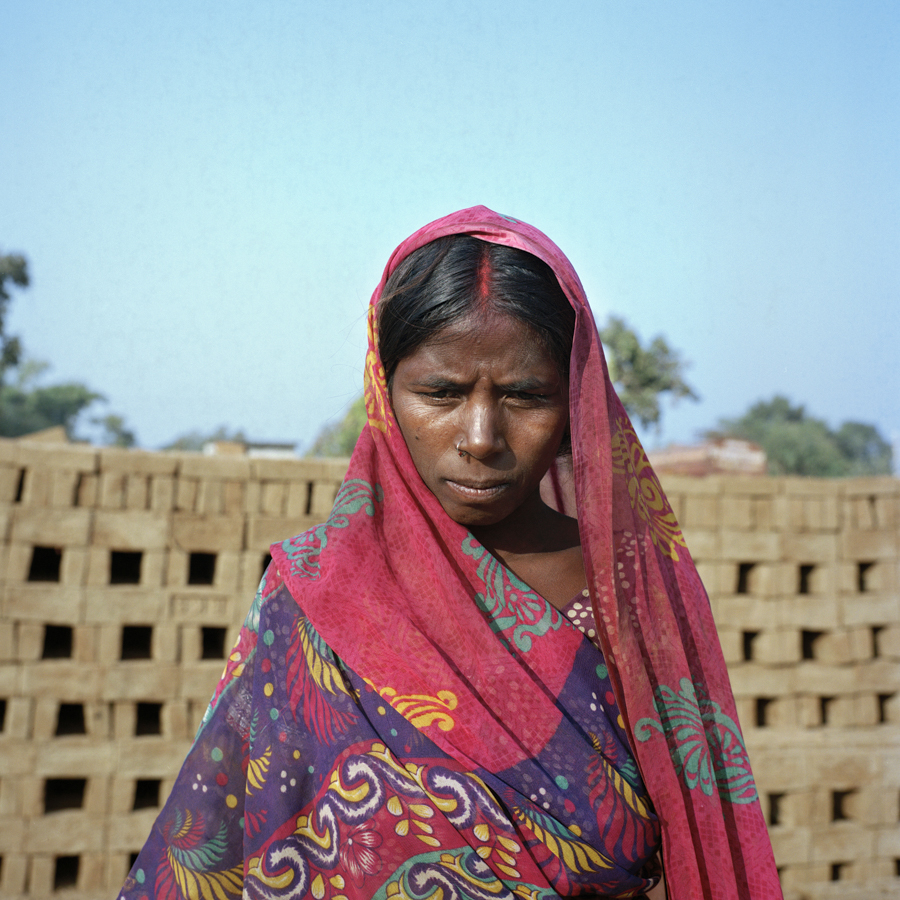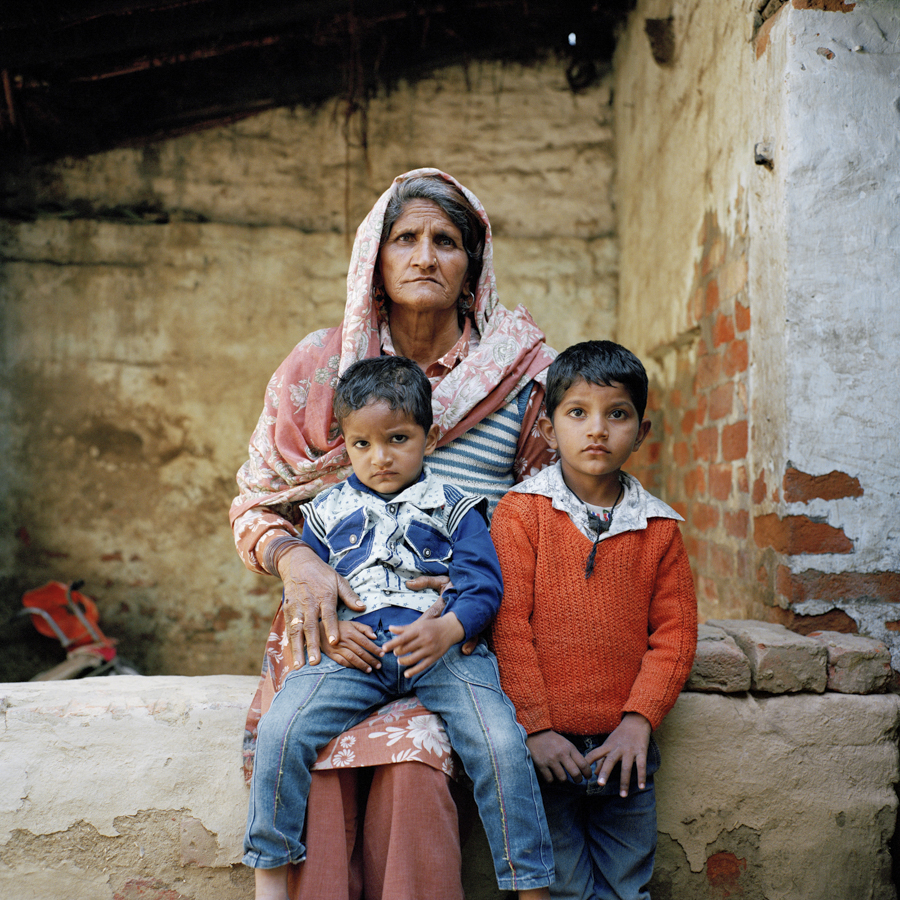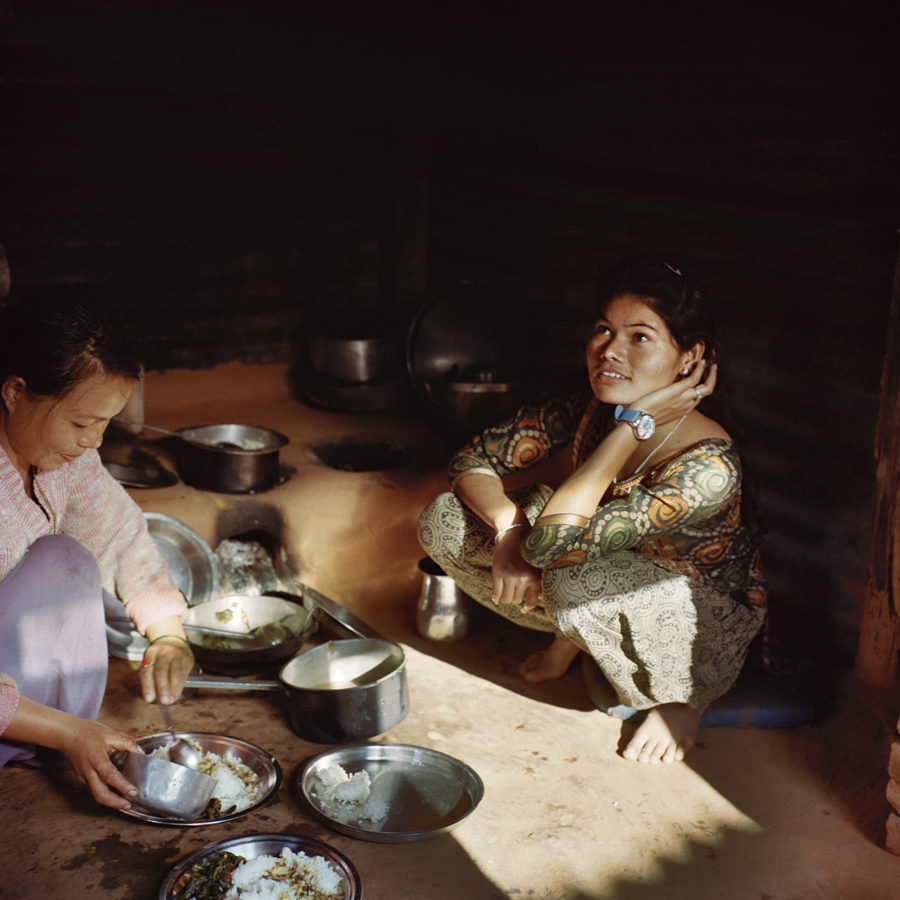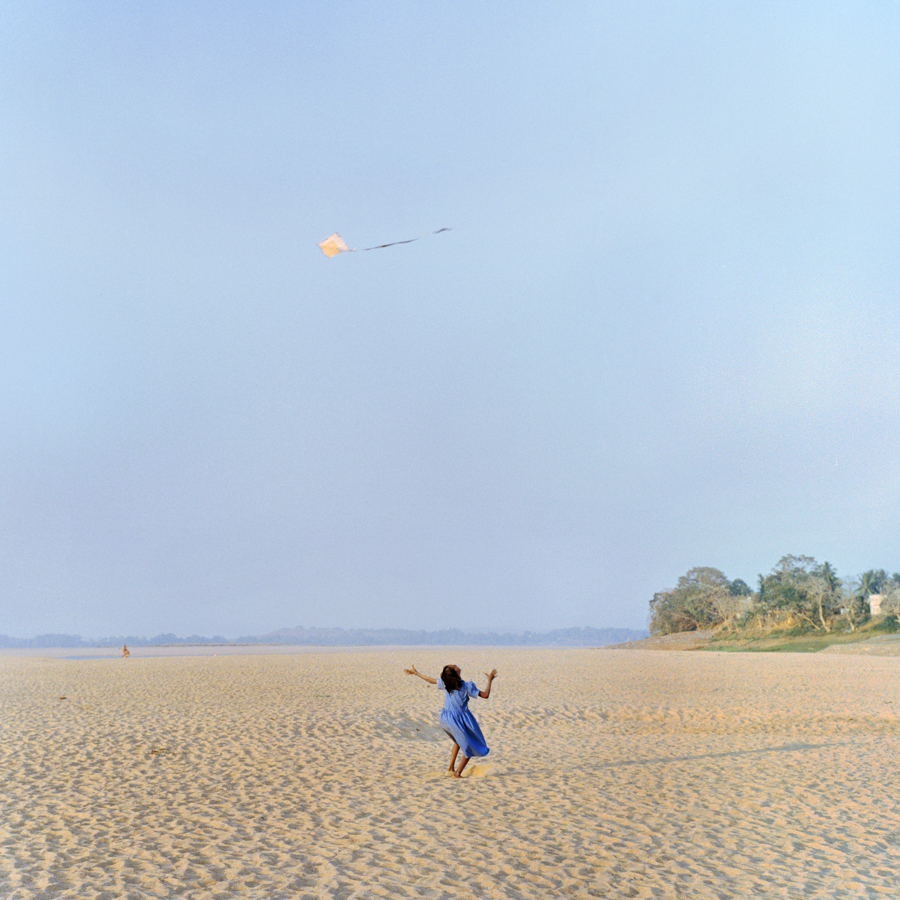撰文:陳彥尹
攝影:莎拉・希爾頓 Sara Hylton
今年七月,印度總統大選推選出史上第二位達利特(又稱賤民)出身的總統拉姆・納特・柯文德(Ram Nath Kovind),可謂少數中的少數,再度引發印度與國際媒體關注。千年來,印度教傳統的種姓制度將人類分為數個階級、規範相對應的職業,如:教師、農夫、商人等;卻有另一群人,永遠在階級底層徘徊,做著清掃垃圾、排泄物與屍體這類多數人避之唯恐不及的工作,他們就是所謂的達利特(Dalit,梵文為被壓迫、殘破之意)。自印度脫離英國獨立以降,於1950年頒布的憲法中,就保障了印度國民不論種姓、性別等等都是自由而平等的,憲法廢除種姓歧視的習俗——比如舊時將達利特視為骯髒的「不可觸碰者」(untouchable),甚至規定政府和教育機構要保留一定比例的達利特名額。60多年過去了,印度經濟成長一日千里、躋身金磚四國之列、甚至已擁有核武,國力今非昔比;但,流傳數百年之久的種姓觀念根深蒂固,這些保障達利特人權的現代法令,鮮少落實。印度境內人數約1.7億的達利特(約佔總人口17%) 彷彿與國家發展完全脫節,依然飽受歧視眼光和犯罪騷擾,在社會邊緣苟延殘喘;許多達利特家庭無法負擔子女的教育費用,代代陷入貧窮無法翻身。
攝影師莎拉・希爾頓2010年第一次到印度,在路邊看到幾位婦女在垃圾堆裡拾荒,當時她大惑不解,四處詢問為何有這許多人拾荒?得到的答案卻是:這些達利特婦女原本就被一般人當作垃圾一樣,不被當人看。莎拉・希爾頓震驚之下,決定深入了解這個被社會忽視的族群。一向關心國際議題與婦女權益的她,此後經常前往印度與南亞地區採訪,2016年,印度的達利特人權組織NCDHR(National Campaign on Dalit Human Rights)與她合作,她花了兩個月走訪印度、尼泊爾與斯里蘭卡的達利特村落,接觸形形色色的達利特族群,採訪他們的生命故事、記錄他們的喜怒哀樂。其中,不少達利特社群相互扶持,在惡劣的處境中努力求生,堅忍不拔的精神也讓希爾頓十分感動。
在印度社會裡,達利特婦女往往是最弱勢的一群,面臨階級與性別歧視、虐待甚至性侵的威脅。透過希爾頓的鏡頭,我們得以看見隱藏在社會底層掙扎的真實面貌。儘管許多婦女境遇悲慘、聞之令人鼻酸,希爾頓表示,她想要呈現這些婦女充滿人性的一面:「我不想把被攝者拍成淒慘無比、毫無尊嚴的模樣,很多攝影師會著重這種面向,但我想將心比心,好好認識這些人,傾聽她們的故事、她們對未來懷抱的希望和夢想是什麼,很多達利特可能一輩子沒有機會向外人講這些事情, 有時我覺得自己好像也帶給她們一點點安慰。」
近年來,印度與國際上為達利特人權發聲的組織逐漸增加,鼓吹自由平等的社會運動在網路時代開始成長,不過,高低種姓之間的權力鴻溝與貧富差距,依舊難以跨越。對散佈印度各地的達利特民眾而言,未來想要被印度社會接納、受到平等待遇,還有一段漫長艱辛的路要走。

帕婓莉亞・黛薇(Parvaliya Devi)在印度賈坎德邦一間製磚工廠上班,廠內全部雇用達利特員工,每人每做1000塊磚頭的工資訂為500盧比;但不少員工反應,實際上每週工作總共才拿到500盧比,折合僅為7.32美金(約為臺幣220元),遠比法定最低工資——每日167盧比還要低,工廠也常積欠薪水,工作環境十分惡劣。

在尼泊爾的納格爾果得(Nagarkot),幾位達利特婦女揹著大捆大捆餵牛用的乾草走回村莊。

斯里蘭卡中部的努瓦拉埃利雅區有不少稱作「線屋」的房子,這些建築物多半只有兩個房間,造型簡陋有如營房,是超過百年前英國殖民時蓋給農工住的,已經沿用好幾代,這裡有很多達利特移工。根據統計,斯里蘭卡境內的農工大約有80萬人之多。

哈希納(Hasina)和她兩個孫子拉維許(Lavish)(左)和艾亞(Aya)(右)住在印度哈里亞納邦的帕尼帕特一座達利特村莊裡,緊鄰高速公路,與其他種姓隔離。哈希納一家人都是達利特,但他們信奉伊斯蘭教。

索莉・黛薇(Sori Devi)是印度賈坎德邦人,她身上有許多達利特的傳統刺青,這種刺青在當地村莊十分普遍,是較低種姓的女性故意用來醜化自己、避免較高種姓男性騷擾的做法。戴薇生活困苦,她的丈夫和村子裡很多男人一樣,都到北方邦與比哈邦的製磚廠打工賺錢。

在印度賈坎德邦,41歲(2016)的南帕提亞・庫馬爾(Nanpatiya Kumar)抱著鄰居的小孩逗著玩。她的丈夫三年前因呼吸疾病過世,當時他們付不起醫藥費,就沒有看醫生。「如果今天我先生還在的話我就不會這麼煩惱了,現在我每天都擔心我小孩的未來,還有現在一家之主不在了,以後有誰可以完成他們的結婚大事。」儘管生活刻苦,村裡許多移工的妻女互助合作,成為彼此的依靠。

印度哈里亞納邦的妲什妮(Darshani)在家中禱告。她年輕時遭酗酒的丈夫家暴,結婚兩年後帶著孩子搬回娘家,開始貸款,自己種田為生,獨力撫養小孩。過了整整13年後,她丈夫終於下決心痛改前非,請求她原諒,希望全家團圓,一起照顧兩人的孩子。

19歲(2016年)的瑞圖(Ritu)坐在印度哈里亞納邦巴普爾村(Bhapur)的家中讓攝影師拍下肖像。她目前就讀大學二年級,是全村學歷最高的達利特女性。「我爸爸不想要我唸書,但我媽媽一直堅持讓我升學,別人怎麼說她就是不管,她每天到工廠上班賺錢,好讓我們可以讀大學。」瑞圖的父親臥病在家,無法工作,只有母親在紡織廠工作,月薪為94美金,約為臺幣2820元,是一家五口唯一的經濟來源。

印度奧里薩邦一間公立學校的學生正在吃營養午餐,校方將達利特學童分隔在右邊一排,他們必須帶自己的餐盤來學校,以免「污染其他人的食物」,這種普遍歧視達利特和少數民族的習俗,一位老師表示十分難過:「我們都盡力照顧好每個學生,可是,每次看到這些小朋友受到這樣待遇,真是令人傷心。」

印度賈坎德邦的鄉下,一頭牛橫死路上,屍體逐漸腐爛。在這裡養牛的村民除了飼料、建造牛舍的開銷之外,還得克服天候因素、傳染病還有食物中毒等等問題。雖然印度人普遍認為牛是神聖的動物,然而,地位最低的達利特,卻得負責清理牛屍和各種動物屍體,他們也因此暴露在各種傳染病的風險之下。

賈曼薩梅・卡莉耶瑪(Ramasamy Kaliyamma)住在斯里蘭卡中部的努瓦拉埃利雅區,她正在整理搭在戶外的簡易廚房。卡莉耶瑪已經高齡80歲(2016年),和丈夫住在一片農場上,兩人膝下無子。「只要我丈夫沒工作的話,我們馬上就沒飯吃了。我們沒有小孩,這點我一直很遺憾。」卡莉耶瑪說。她的丈夫每個月薪水200盧比,大約比13塊美金多一點,約臺幣390元,這種薪水他無法負擔通勤費用,只好每天走6個小時往返家裡和工作地點。一貧如洗的生活非常難熬,卡莉耶瑪回想以前農場淹水時的無助情景,忍不住掉淚:「每次淹水我就不能煮飯,非常痛苦。」

在印度與尼泊爾交界的戈西河(koshi river)上有許多達利特婦女在抓魚。

印度奧里薩邦的達利特婦女正在收割稻子。「我們一個月只有幾天有工作而已,其他時候只能枯等,沒工作就沒辦法養家糊口⋯⋯說真的,只要給我工作,我什麼都肯做。」一名婦女表示。這些婦女每天工作八小時的報酬為180盧比,相當於2.65美金,約為臺幣79元。

蘭・庫馬爾・碧沙迦(Ran Kumar Bisunkya)和她四歲的兒子辛斯卡利(Sanskari)在尼泊爾加德滿都附近有一塊農地,種植花椰菜、番茄、蔥、菠菜、芫荽等作物,到當地市場賣菜。碧沙迦三年前加入一間農產合作社,獨立經營自己的農產,每天五點起床灌溉作物。她說:「我覺得自己可以獨當一面了,因為現在我已經有自己的資產,有時候連我先生都要跟我借錢。」

潘發・巴柯蒂(Pampha Parkoti)和家人位於尼泊爾登達托克(Dandathok)的家中用餐,這座簡陋的房子是他們在2015年尼泊爾大地震後重建的。巴柯蒂是一名記者,向來關注達利特與婦女權益。「我從小在達利特家庭長大,我常常想像,如果我生在一個婆羅門家庭,又會是怎樣的人生⋯⋯所以我想參加社會運動,改善不公平的社會。」她到加德滿都去唸書時,雖然她脊錐受傷、又因達利特身份被趕出租屋處,仍然堅持完成學業。

印度奧里薩邦的默哈納迪河在乾季時露出大片河床,附近的哈里拉吉浦村(Harirajpur)一名達利特女孩正在河床上追著風箏跑。這條河是附近居民最重要的水源,每年乾季時,村民都得走很長的路才有辦法取水。





























